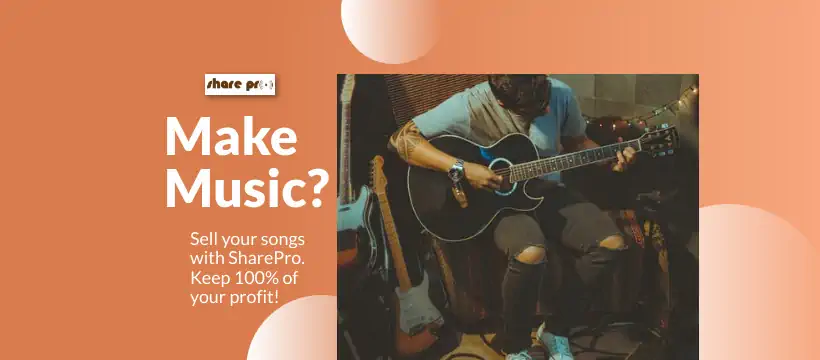Stage Performance Tips for Indie Artists: How to Shine on Your First Show
Master your debut show: engage audiences and build your brand with confidence and stage presence.
When performing on stage for the first time, nerves are inevitable, but this moment is a huge opportunity. For indie artists, that initial stage performance can make or break how they connect with their audience and leave a lasting impression. Stage presence is more than just playing your music — it's about engaging the crowd, owning the moment, and building a personal brand. Making a successful career in live entertainment typically involves performing on a stage. There are a lot of cool things you can do on stage while performing as well as things you should never do.
In this guide, we’ll dive into some essential tips that can help turn an average performance into something memorable. Whether you're a seasoned artist testing new waters or completely new to the scene, these techniques will help you feel confident and elevate your stage presence from day one.
Tips for Performing on Stage for the First Time:
- Practice, Practice, Practice It sounds obvious, but rehearsing is your best friend. Make sure you’re not just practicing your songs, but also your stage movements. Know how to handle a mic, move around the stage, and interact with your band (if you have one). Rehearsals will help you feel more natural when it's showtime.
- Plan Your Setlist with Flow in Mind Don’t just throw your songs together — create a setlist that tells a story or takes your audience on a journey. Start with an attention-grabber, mix high-energy tracks with slower ones, and end with something unforgettable. A good flow will keep the crowd engaged and make your set more dynamic.
- Engage with the Audience It’s not enough to just sing or rap — you need to connect with the people in front of you. Make eye contact, smile, and talk between songs. Ask how the crowd is doing or share a quick backstory about the next track. The more personal and interactive you are, the more the audience will vibe with you.
- Get Comfortable with Your Space Take a few minutes before your performance to explore the stage. Know where the edges are, check out the lighting, and get familiar with your equipment setup. This will help you feel less disoriented once you’re in front of the crowd.
- Breathe and Relax Nerves can mess with your performance, so it’s important to breathe deeply and relax before going on stage. Remind yourself that the audience is rooting for you, not judging you. Shake off the nerves, loosen up your body, and remember to have fun!
- Stay Present and Adapt Anything can happen during a live show — from sound issues to forgetting lyrics. The key is to stay calm, adapt, and keep going. The audience often won’t notice minor mistakes unless you draw attention to them, so just roll with the punches and stay in the moment.
- Look the Part Your outfit and style contribute to your overall stage presence. Wear something that makes you feel confident and expresses who you are as an artist. Your stage look should match your vibe and help you stand out.
- Own the Stage, Don’t Just Stand There Standing still in one spot doesn’t grab attention. Move with the music, use hand gestures, and own the space like you’re meant to be there. Even small movements, like stepping forward during a big moment, can make a performance more engaging.
- Have a Signature Moment Give the crowd something to remember. Whether it’s a cool shout-out, a special dance move, or a unique way you end your set, make sure there’s one moment that sticks with them after the show. It’s these signature moments that build your reputation.
- End with Gratitude Always thank your audience for coming out, and if there’s a shout-out to the venue or other artists, throw that in too. Ending your performance with gratitude leaves a positive impression and shows humility, which fans appreciate.
By using these tips, you’ll not only make your first performance a success, but you’ll also set the stage for a promising future in music.

What to Avoid:
- Don’t Overthink It It’s easy to get stuck in your head, worrying about every little detail, but overthinking will only make you more nervous. Trust your preparation and focus on enjoying the moment instead of obsessing over perfection. Remember, the crowd wants to enjoy your music, not pick apart your mistakes.
- Avoid Staying Glued to One Spot Standing in one place the whole time can make your performance feel static and uninspired. Resist the urge to play it too safe — use the stage to your advantage! Even small movements, like stepping toward the audience during key moments, will bring more energy to your set.
- Don’t Ignore the Audience Engaging with the crowd is key to building a connection. Don’t get too caught up in your performance that you forget to look at the audience or interact with them. If they feel ignored, the energy in the room can fall flat.
- Avoid Over-Complicated Setups Your first gig isn’t the time to experiment with complex gear, lighting, or elaborate effects. Stick to the basics and what you’re comfortable with. Focusing on too many technical elements can take away from your actual performance, especially if something goes wrong.
- Don’t Apologize for Mistakes Mistakes happen, especially during live performances, but don’t dwell on them or apologize to the crowd. Chances are, they didn’t even notice. If you make a small slip-up, just keep going — it’s all part of the live experience!
- Avoid Talking Too Much Between Songs While it’s great to engage with the crowd, talking too much can kill the momentum of your set. Keep your between-song banter short and sweet. Focus on the music and let your songs do most of the talking.
- Don’t Overdo Your Energy Being energetic is important but overdoing it can wear you out too quickly or make you seem forced. Avoid running out of breath by pacing yourself. Find a balance between giving it your all and conserving energy for the entire set.
- Avoid Underestimating Soundcheck Skipping or rushing through soundcheck is a common mistake for first-time performers. Make sure you take the time to check your levels, monitor positioning, and overall sound quality. Poor sound can ruin even the best performance, so don’t neglect this part of your prep.
- Don’t Be Afraid to Embrace Silence If you feel a bit of awkward silence between songs, don’t rush to fill it. Pausing for a moment can build anticipation. Let the crowd soak in what they’ve just heard instead of always trying to fill every second with chatter.
- Avoid Letting Nerves Show Even if you’re feeling nervous, try not to let it show. Fidgeting, pacing, or looking uncomfortable can be distracting for the audience. Instead, take a deep breath and channel that nervous energy into your performance.
By avoiding these common pitfalls, you’ll be able to give a more polished and engaging performance, leaving a lasting impression on the audience and setting the tone for future gigs.
How to Gain Stage Experience as an Indie Artist:
- Start Small with Open Mics Open mics are a great way to get comfortable performing in front of an audience without the pressure of a full gig. They offer a low-stakes environment to practice your stage presence, interact with crowds, and get used to performing live. Plus, you can connect with other local artists.
- Perform at Local Events Look for community events, festivals, or local shows that feature live music. These types of gigs are often more flexible for newer artists, and they help you get used to performing in different settings. Local events also help you build a following close to home.
- Collaborate with Other Musicians Teaming up with other artists or bands can open up opportunities to perform more often. You can share the stage, open for each other, or even do joint sets. This helps you get exposure to different crowds and learn from other performers’ stage habits.
- Book Small Venues Instead of jumping straight into large venues focus on booking gigs at smaller spots like cafes, bars, or lounges. These intimate spaces allow you to work on your live performance skills while connecting more personally with the audience. Smaller shows give you room to experiment without as much pressure.
- Join a Music Community or Collective Being part of a music collective or group can lead to more performance opportunities. Many collectives organize shows, showcases, and events where their members can perform. This also gives you a support system of like-minded artists who can help you improve.
- Host Your Events If you’re not getting enough opportunities to perform, create your own! Organize a house concert, live stream, or backyard show. By taking control of your gigs, you can experiment and practice your stage presence while growing your fanbase on your terms.
- Volunteer to Open for Other Acts Reach out to local or touring artists and offer to open for them. Opening acts don’t always get paid, but they’re great for gaining experience and exposure. You’ll learn how to warm up a crowd and handle shorter, more focused sets.
- Record and Review Your Performances After each gig or rehearsal, record your performance and watch it back. This helps you see where you can improve, whether it’s your stage movements, crowd interaction, or energy levels. It’s one of the best ways to track your progress and fine-tune your act.
- Take Every Opportunity to Perform Whether it’s a friend’s party, a school event, or a charity gig, say yes to as many performance opportunities as you can. The more you perform, the more confident you’ll become, and each show will help you refine your skills for bigger stages down the road.
- Practice Live Streaming In today’s digital age, you don’t need a physical stage to gain experience. Platforms like Instagram, YouTube, and TikTok allow you to perform live for virtual audiences. This gives you valuable performance practice, helps you reach a global audience, and prepares you for future in-person gigs.
By consistently seeking out and accepting these performance opportunities, you’ll gain the stage experience needed to refine your craft and build your confidence as an indie artist.

Final Thoughts:
Stage presence is a skill that gets better with time. Take every opportunity to perform, embrace the challenges, and always stay professional. The more comfortable you become, the better you’ll connect with your audience.
Blog Article Tags
performance stage audience indie artists presence mistakes confidenceMore Articles
Where To Find Good Indie Music - If you're a long time fan or first time listener of Indie music, we'll show you the best methods for discovering the music you love.
Seven Secrets to Help You Master the Lead Guitar - I show you the secrets of top lead guitar players to help you improve.
Seven Tips to Help You Become a Kickass Drummer - Learn secrets to becoming a great drummer with 7 practical tips.
Visual Journeys: How Music Videos Shape the Narrative of Indie Music - Learn how music videos help artist create a visual expression of their music.
Seven Tips on Playing the Bass Guitar - Learn from the pros is a great way to kick start your bass guitar playing.


